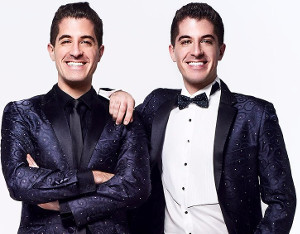The June 11th recital in Duke’s Summer Festival of Music featured members of the Mallarmé Chamber Players. The central figure in the first-rate ensemble, who played in every piece, was harpist Jacquelyn Bartlett, of the faculties of Appalachian State and the NC School of the Arts, as well as founder and director of Summer Music, a chamber music festival in Blowing Rock. Joining her at various times and in various configurations were cellist Jonathan Kramer of the NCSU faculty, violist Scott Rawls of the UNC-G faculty, and flutist Debra Reuter-Pivetta, of the Salem and Guilford College faculties and a principal of the Greensboro SO.
Debussy hit fortuitously on a lovely instrumental combination when he wrote his Sonate en trio pour flûte, alto et harpe in 1915, in which he originally planned to use the oboe rather than the viola; it has enchanted ears and captured hearts ever since. In 1984, two other composers wrote works for the same instrumentation: American Dennis Riley’s (1943-1999) Apparitions opened the evening’s program and German Harald Genzmer’s (b. 1909) Trio for Flute, Viola and Harp closed it. The latter’s final movement, “Thema mit variationen über ein altes Volkslied,” seemed an especially fitting conclusion to an evening filled with lovely melodies, many of them seeming like folk or traditional tunes, that were passed back and forth among the instruments as well as being played in ensemble.
The three movements of Riley’s piece bear only Roman numerals, contributing to the mystery suggested by its title, and it does indeed have some moments reminiscent of standard spooky soundtracks, but is on the whole pleasing and light with many charming airs to offset the creepy sounds. It returns to its opening melody at the end of the third movement for a nice cyclical effect. Genzmer’s work follows the more traditional four-movement sonata form, albeit not in the traditional manner or order: “Fantasia,” “Scherzo,” “Notturno,” and the aforementioned “Thema.,” whose “minstrel melody the composer selected from the collection Souter Liedekens, Antwerpen 1540.” The work shows off all the capabilities of the harp as well as giving each musician a chance to display some pyrotechnics in several of the movements, which they all did well, and calls for piccolo at the opening of the “Thema.” for yet more variety.
The second work in the first half was Mario Castelnuovo-Tedesco’s Sonata for Cello and Harp, Op. 208, composed near the end of his life in 1967. In introductory comments, Kramer admitted to his affection for this composer’s music (shared by this reviewer) and recounted his unsuccessful attempt to obtain the score for the piece from the musicians who recorded it in 1968: both had lost their copies, and it had not been published. Mallarmé founder and director Anna Ludwig Wilson came across it by chance in the late ’80s in a drawer of the Library of Congress and gave it a second life beginning in 1989, with performances locally and in Charleston, SC, at the Spoleto Festival, and subsequent publication by Lyra in 1993. It is a stately, elegant, lyrical work whose second movement, “Minuetto varieto, tempo di minuetto (allegretto grazioso)” contains a pleasing folk-song like melody and also features some pizzicato work on the cello that produces a nice texture. The artists will present the piece in Geneva, Switzerland, on July 27 at the World Harp Congress. Might they also record it?
Kramer and Bartlett gave a pre-intermission encore: their own arrangement of the “Intermezzo” from Leoncavallo’s Cavalleria Rusticana; it seemed effective with the voice of the cello even though we are accustomed to a higher one.
Opening the second half was Camille Saint-Saëns’ Romance for Flute and Harp, adapted from his Romance pour flûte (ou violon) et orchestre (ou piano) in D flat, Op. 37, composed in 1871. Saint-Saëns can always be counted on for a pretty tune, and he does not let us down here, even though this is a fairly short (approx 6.5 min.), modest piece. As in the Riley, the opening melody returns at the close for a cyclical effect.
Performance throughout the evening was well nigh flawless for this listener’s ears, and the smallish audience appeared to think so, too, for it applauded enthusiastically and at length after each work. Come to think of it, a recording of the entire program would be welcome! Program notes by Riley and Prof. R. Hausser for the composers and the works were fairly good, although those concerning the Castelnuovo-Tedesco could have used some better proofreading and editing. There was, however, nary a word about the Saint-Saëns. Artist bios were succinct and good.











